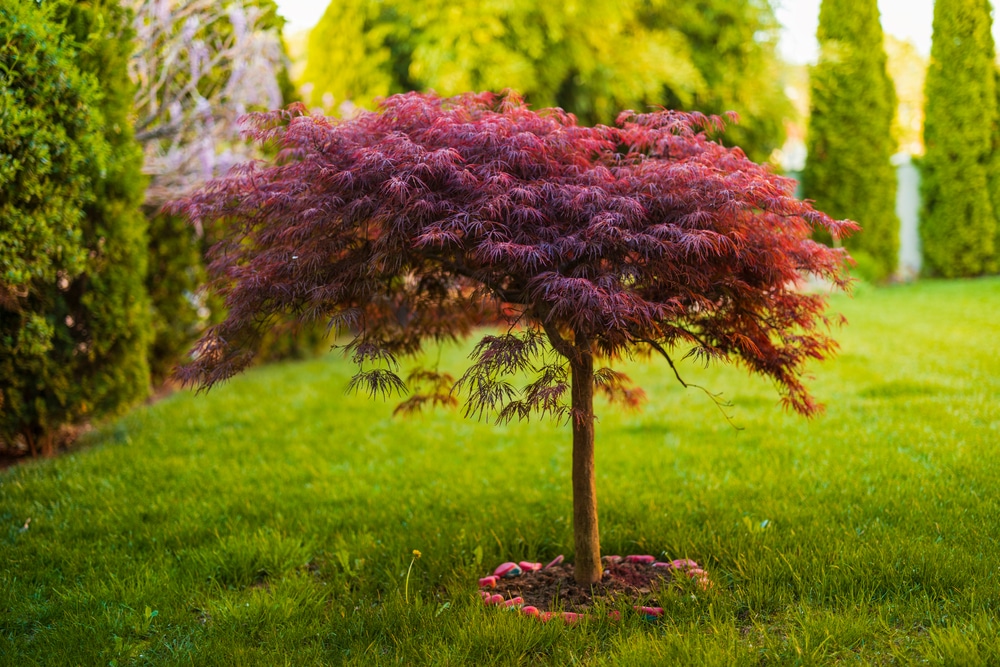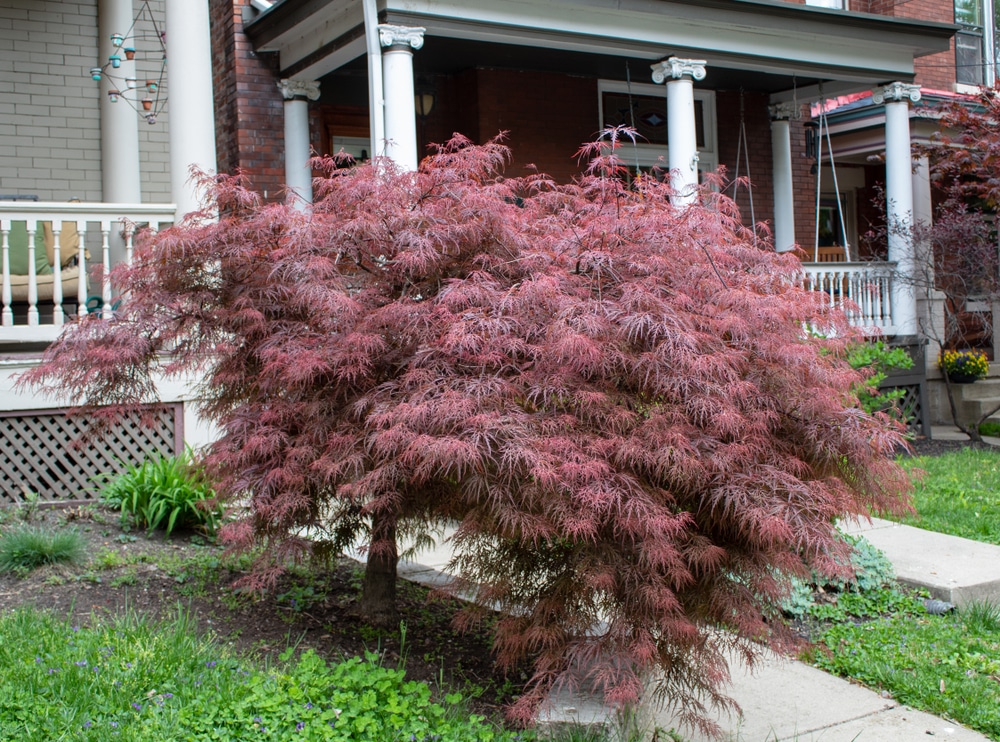Japanese maples are gorgeous trees that can add a stylish touch to any yard or garden. Since the tree has such beautiful lush branches, many Japanese maple caretakers find themselves asking, can you cut the top off a Japanese maple?
Overall, cutting the top off a Japanese maple is a bad idea. Cutting too much off the top, or crown, of Japanese maple, will create an ugly, awkward shape. Trimming the top too much will also stimulate new growth, resulting in stringy young branches that will stick out from the top of the tree.
While cutting the entire top off a Japanese maple is unadvisable, there are several pruning strategies you can take to keep your maple shapely and attractive.
How To Prune a Japanese Maple

Now that you know the answer to “can you cut the top off a Japanese maple?”, let’s look at how to properly prune it. Properly pruning a Japanese maple requires patience and discernment. You will need to carefully examine the Japanese maple’s natural shape and condition and carefully choose which branches to trim.
Timing
Timing is essential to having a good outcome when pruning a Japanese maple. If a Japanese maple is still young, trimming may disrupt the tree’s natural growth. Despite a young Japanese maple’s fairly attractive appearance, you will have to wait out the tree’s awkward phase before interfering.
Once a Japanese maple is at least 15 years old, you can start occasionally pruning its branches. Although you can prune a Japanese maple any time of the year, winter and summer are the best seasons if you want optimal results.
You should prune your Japanese maple in winter to get the most accurate vision of the branches. If your focus is on thinning the leaves, summer is the ideal pruning time.
Consider the Shape
Consider the shape of your Japanese maple as you plan your pruning approach. You will need to work with the natural shape of your tree, not against it.
If you have an upright Japanese maple you will want to focus on separating the layers and thinning out the foliage evenly throughout the tree. This pruning strategy will create a charming fan-like effect.
On the other hand, if you have a laceleaf Japanese maple, you are dealing with a wider and lower shape. Like an upright Japanese maple, your pruning should focus on creating distinct, even layers.
For the perfect canopy effect on a laceleaf Japanese maple, you can carefully thin the topmost crown of the tree. Remember, a little goes a long way: only cut off the branches that protrude in bad directions and disrupt the natural curve of the foliage. Never cut more than one-fifth of the crown’s density.
Work With the Natural Structure
Stay aware of the natural structure of your Japanese maple. No matter how much you prune your tree, it will still have the same genetic growth tendencies. You can save yourself time and effort by pruning your Japanese maple in a shape that matches the way the branches grow.
You should also embrace your tree’s natural height and branch length. While you can lightly trim a Japanese maple’s crown and longer branches, excessively cutting the top or branches will only increase the pace of growth and create an uneven silhouette.
Final Thoughts
So, can you cut the top off a Japanese maple? You can but not excessively. Japanese maples are beautiful trees with magnificent foliage. While the height of the tree can only be handled with minimal trimming, precise pruning can help create an attractive and manageable shape.
